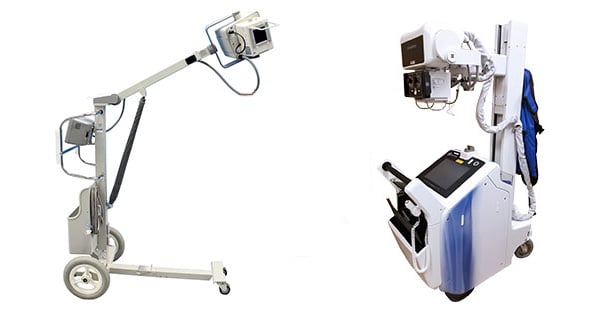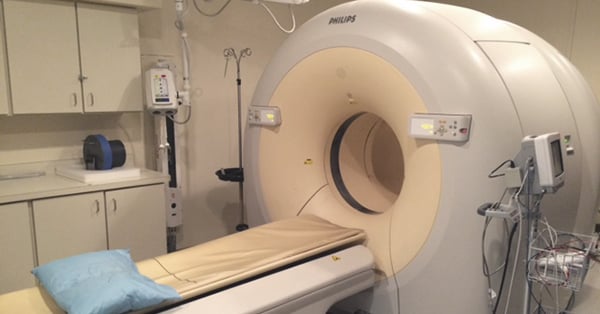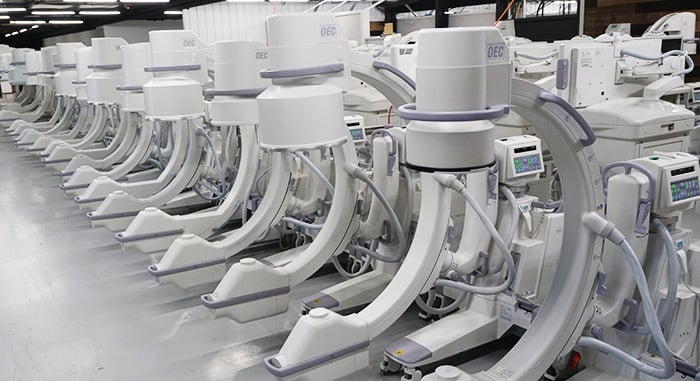
May 1, 2020 : 2 min read
What Is the Best Portable X-Ray for COVID-19 Screening?
While we hope that the peak of this unprecedented outbreak is behind us, it's clear that the presence of COVID-19 will still be felt in our healthcare systems for the foreseeable future. During that time, imaging needs in some areas will continue to be high as new cases are admitted and recovering patients receive follow-up.
If your facility is in temporary need of additional X-ray capacity, you probably already know that a portable X-ray system is a good choice to fill that need. What you may not know is which of the many models available will be the best clinical fit and best overall value for you. To help in that search, we'd like to share a short break down of where and how these units shine.
While portables are not conclusive for COVID-19 testing, they are a helpful tool for pre-screening patients and alleviating back logs on other, more powerful systems like fixed rad rooms or CT scanners.
Portable X-Ray Systems for COVID-19 Screening
Extremity Portables
Portable X-ray units of this type include Source Ray products or Dynarad products. These smaller units are lightweight and highly mobile, making them ideal for facility-to-facility movement, or even deployment off your clinical campus. With extremity portables, flexibility of placement is the name of the game.
The main drawback to using extremity units is the size of their generators. With typical generator ratings of 5 kW or less, these units are designed with extremity testing, under normal circumstances in mind. They can, however, provide sufficient image quality for chest X-ray screenings up to a certain weight limit and patient size, usually in the 250 – 300 lbs range. For patients under that size, these are excellent units that can be implemented in multiple facilities or field hospital settings.
Full Size Portables
These units are exactly what they sound like: bigger, heavier, more powerful portable X-ray systems. Examples include the GE Optima 220 and AMX IV, the Carestream dRX Revolution, and the Shimadzu DaRt.
Full-size portable X-ray machines weigh between 750 and 1000 lbs, but pack a much bigger punch than their extremity counterparts. This is due to their significantly larger generators, ranging in output from 15 kW – 40 kW. With such a powerful generator, even cross-table examinations of the abdomen are possible on patients from a much higher weight and size bracket.
The obvious drawback to these units is their size, which can limit portability. Full-size portables can be rolled around a facility quite easily due to excellent design and motor-assisted functions, but transferring them to different facilities (such as field hospitals) can be quite the challenge. Without a smooth surface and a wide, clear path, these units can be hard to deploy outside a standard clinical setting.
The Takeaway
In most cases, either an extremity or a full-size portable X-ray can produce the image quality a physician would require for COVID screening purposes. The deciding factors between these two categories are power and portability. If you need deploy your portable outside a traditional setting, an extremity model will be a better pick for you. If you'll be using your portable in-house and want the power level to use the portable system on bigger patients, or to use it for regular work while other systems handle COVID cases, a full-size system will be the best for you.
Whichever way your needs have you leaning, our team is ready to help with rentals of a variety of portable X-ray equipment to help in the fight against COVID-19 and beyond. Click "View Rental Options" below to request a rental, or call 517-668-8800 to speak directly to our team.

Tony Baggett
Tony Baggett is an X-Ray Product Manager at Block Imaging. Tony assists imaging centers, hospitals, and orthopedic centers in their purchases of x-ray equipment. When he’s not serving customers, Tony can be found hunting, fishing, and camping with his wife, son, and daughter.






